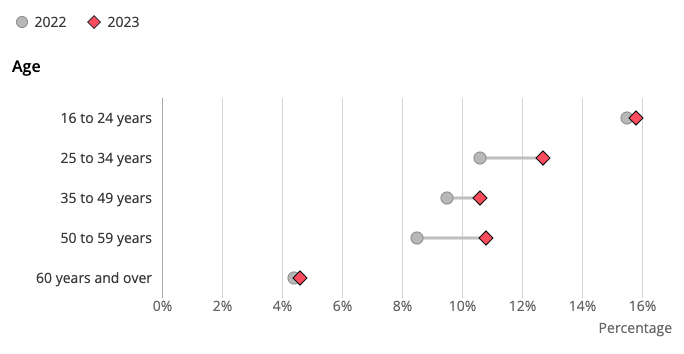Highly comparable
You can directly compare or combine these data with ONS data. This is because the data sources and definitions that the statistics producer used are the same, or almost the same, as those we used.
Broadly comparable
You can compare or combine these data with ONS data. However, there are a few differences in the data sources or definitions or both that the statistics producer used.
This could affect how you use or interpret any compared or combined statistics.
Not comparable
You cannot compare or combine these data with ONS data because the data sources or definitions or both are entirely different to those we used.







